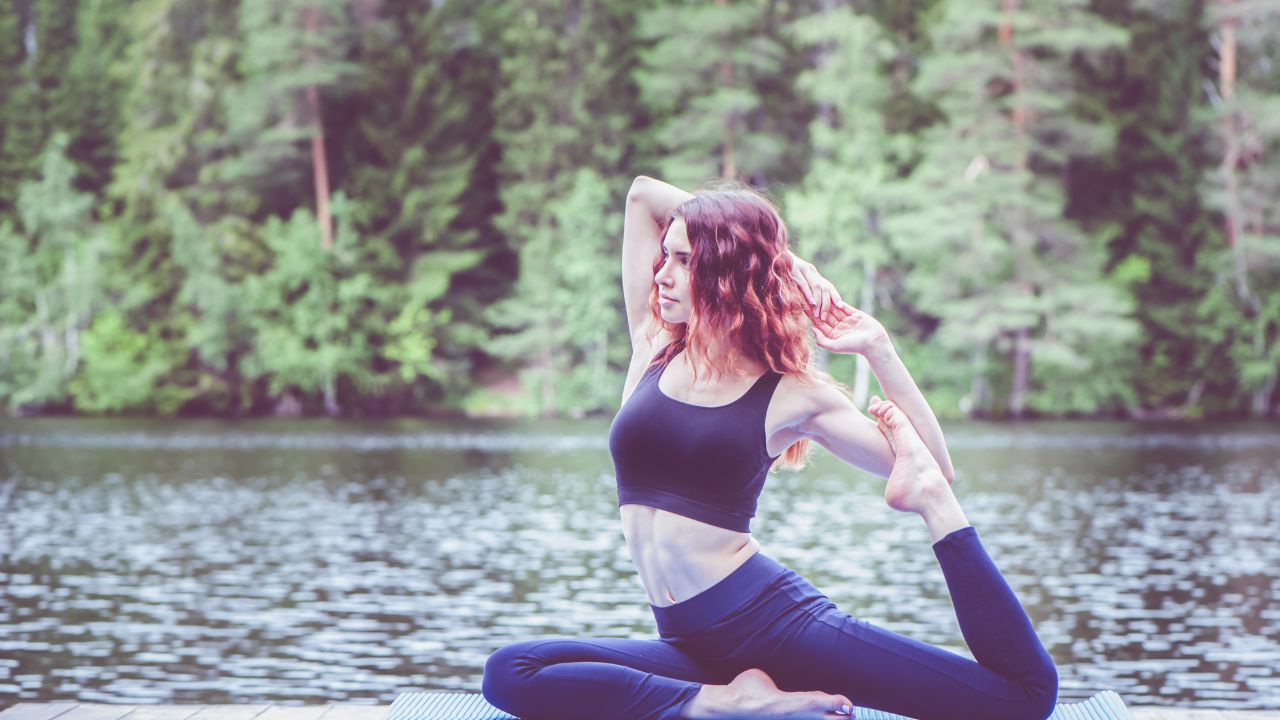Pigeon Pose (Eka Pada Rajakapotasana)

Pigeon Pose, or Eka Pada Rajakapotasana, is a deep hip-opening pose that stretches the hips, glutes, and thighs. It also helps to release tension in the lower back and promote relaxation. There are a few variations of Pigeon Pose, so I’ll describe the classic variation and a modified version. Here’s how to practice Pigeon Pose:
Classic Variation:
- Start in a tabletop position on your hands and knees, with your wrists directly under your shoulders and your knees directly under your hips.
- Slide your right knee forward towards your right wrist, placing it behind your right hand. Your right shin should be diagonal, with your right foot positioned in front of your left hip.
- Extend your left leg straight back, keeping your left toes untucked. Ensure that your left leg is extended straight back from your hip, not angled out to the side.
- Lower your pelvis and torso down towards the mat, aiming to rest your right outer hip on the ground. You may need to adjust the position of your right foot and shin to find a comfortable stretch in your right hip.
- Square your hips as much as possible by aligning your right hip with your left hip. Your weight should be evenly distributed between your hips.
- If you feel stable and comfortable, you can walk your hands forward, extending your arms in front of you and lowering your chest towards the ground. Rest your forehead or chin on a block, cushion, or the mat for support.
- Take slow, deep breaths and relax into the pose. You may feel a deep stretch in your right hip, glutes, and outer thigh. If the stretch is too intense, you can place a folded blanket or bolster under your right hip for support.
- Hold Pigeon Pose for several breaths or for as long as feels comfortable. To release the pose, gently press into your hands, lift your torso, and slide your right leg back to the tabletop position. Repeat the pose on the other side.
Modified Variation (Chair Pigeon Pose):
If the classic variation is too intense, you can try a modified version using a chair:
- Start by sitting on a chair with your feet flat on the ground, hip-width apart.
- Cross your right ankle over your left thigh, creating a figure-four shape with your legs. Flex your right foot to protect your knee.
- Keep your spine tall and engage your core. You can place your hands on your thighs or grab onto the sides of the chair for support.
- Gently press your right knee down towards the floor while keeping your back straight. You should feel a stretch in your right hip and glutes.
- Hold the pose for several breaths, allowing the muscles to relax and the stretch to deepen.
- To release the pose, uncross your right leg and repeat on the other side.
Some key points to remember while practicing Pigeon Pose:
- Listen to your body and work within your comfortable range of motion. Avoid pushing yourself too far or feeling any sharp pain.
- Keep your hips level and square, avoiding any excessive rotation or twisting.
- Modify the pose as needed to accommodate any hip or knee discomfort or limitations.
Benefits of Pigeon Pose include:
- Stretches and opens the hips, particularly the hip rotators and glutes.
- Relieves tension in the lower back and hip muscles.
- Improves flexibility and mobility in the hips and pelvis.
- Stimulates the digestive system and aids in detoxification.
- Promotes relaxation and can help release emotional tension stored in the hips.
As with any yoga pose, listen to your body and practice mindfully. If you have any specific concerns or limitations, it’s advisable
Specific Content Keywords : eka pada rajakapotasana steps,pigeon pose benefits,eka pada rajakapotasana benefits,pigeon pose for beginners,one legged pigeon pose benefits,dwi pada rajakapotasana
king pigeon pose,one-legged king pigeon pose (eka pada rajakapotasana),pigeon pose explained,what is pigeon pose,half pigeon pose vs pigeon pose,pigeon pose benefits,what is pigeon pose in yoga.

